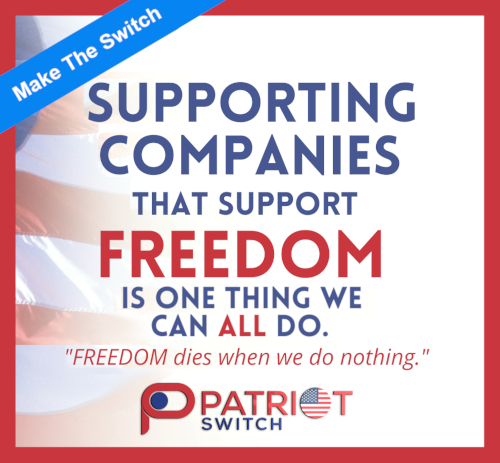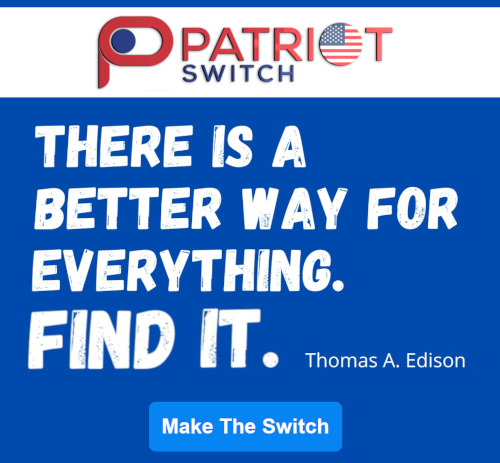The Complexities of Cannabis
Some 31 states have authorized medicinal marijuana and the legalizing or decriminalizing of recreational marijuana is trending across the country. Against the backdrop and reality of marijuana, a.k.a. cannabis, becoming more mainstream, and for educational purposes only, here is an outline about marijuana that is prescribed for medicinal applications only.
Cannabis has two main chemical types: (1) tetrahydrocannabinol (THC), the chemical that produces the “high,” and (2) cannabidiol (CBD) and introduce the endocannabinoid system within which medicinal marijuana (MM) works in our body.”
CBD does not make a person high. That property belongs to the THC molecule which is absent in products labeled CBD.
CBD oil, which contains no hallucinogenic properties, is legal in all 50 states and can be bought online and health food stores. It has shown great promise as a natural plant product especially with children with seizures and cancer patients who are receiving chemotherapy and suffering with nausea. (See the chart below that shows the different cannabinoids and what illnesses they can help with. This chart is widely available on the Internet, and although there is no citation, research especially from Israel demonstrates that its correct.)

The Ednocannabinoid System
Medicinal marijuana (MM) containing THC is remarkably different than the commonly prescribed single-chemical drug that our physician may prescribe for us at an office or hospital visit. MM uses the cannabis plant and its two basic cannabinoids, THC and CBD, as a medical therapy to lessen symptoms, potentially treat conditions, and possibly help lessen the physical and emotional pain of some diseases. Using MM requires taking more personal responsibility in appropriate aspects of the healing process. Like all medicine and most things in life, trial and error prevails to determine what works best. At the very least, medicinal marijuana can take a person out of a painful drama, assists in overcoming nausea, and helps induce sleep.
The endocannabinoid system (ECS) is one of the body’s most important physiological and neurotransmitter processes involved in establishing and maintaining our human health. Undiscovered until the 1988-92 time frame, scientists have now shown that this group of natural chemicals and their receptors are found throughout the human body and are instrumental in a variety of physiological processes, including pain modulation, memory, and appetite. Because knowing about CBDs and the ECS will be helpful to understanding how to use MM, I will address these first and then describe the role of THC. According to the latest research, I will also identify the chemicals in the brain that MM helps to balance
Medicinal marijuana can take a person out of a painful drama, assists in overcoming nausea, and helps induce sleep.
As reported by Project CBD, an article in the Neuroendocrinology journal highlights the crucial role of the endocannabinoid system in protecting against posttraumatic stress disorder (PTSD), a debilitating chronic condition involving horrific memories that cannot be erased. In an effort to understand the neurobiological mechanisms that underlie the onset and development of PTSD, a team of U.S. and Canadian scientists analyzed 46 individuals who were near the World Trade Center in New York City during the 9/11/2001 terrorist attacks.
Twenty-four of them suffered from PTSD following the attacks, while 22 subjects did not. The researchers found that those suffering from PTSD had lower serum levels of anandamide (also called AEA), an endogenous cannabinoid, compared to those who showed no signs of PTSD post- 9/11. Inherent to all mammals, anandamide (our inner cannabis, as it were) triggers the same brain receptors activated by THC and other components of the marijuana plant.
Cannabinoids are a class of diverse chemical compounds that act on cannabinoid receptors in our brain and most other organs. These receptors are analogous to the lock and cannabinoids are analogous to the key that “opens” the lock and brings about the effects on the brain and body.
Depending on the molecule, this action then opens or closes the lock. When the lock is open, a physiologic reaction occurs to activate the body’s neurotransmitters. These may be excitatory, such as dopamine, i.e., an “upper” or stimulant, or inhibitory, such as serotonin, a “downer” or sedative.
At least 85 different cannabinoids have been isolated from cannabis and up to some 200 flavinoids/terpenes (for taste/aroma) appear to influence its effect. Over the past 30 years, researchers have evaluated many of them. We await their eventual discovery of how each individually or in combination can be most effective in treating various health issues.
This whole system is built into our DNA. Even though conventional medicine lacks understanding of the implications, it is an important discovery for our own health and the health of the planet
Medicinal Marijuana and Posttraumatic Stress Disorder
In PTSD, the part of the brain called the amygdala malfunctions to trigger anxiety according to the Center for Medicinal Research at the University of California at San Diego. The amygdala is one of six parts of the brain involved in cannabinoid effects: (1) hippocampus — memory and learning; (2) amygdala — novelty, emotion, appetitive behavior; (3) basal ganglia and motor cerebellum — real-time coordination, selective attention and time sense; (4) nucleus accumbens — reward mechanisms; and (5) cortex and frontal lobe — executive function, judgment, synthesis, and evaluation .
Instead of being able to block memories of highly traumatic events, the amygdala malfunctions and allows a person to be flooded with terrifying, emotionally painful memories. The affected person repeatedly remembers and relives the ordeal. Note that this awareness can help heal around the related pain. This process occurs by naming the traumas and then sharing the experiences and pain with safe others.
This malfunction can be attributed to a faulty cannabinoid receptor mechanism and process. Scientists have suggested two possible causes:
(1) The amygdala’s cannabinoid receptors fail to take in the body’s natural cannabinoids because they are either malfunctioning or limited in number and/or efficiency, or both.
(2) The brain and the body cannot make enough of their natural cannabinoids to quiet this repeated traumatic response.
Either of these situations results in the continued state of hyper-arousal with the resulting fight-or-flight feeling or “walking on egg shells.” CBDs may help in this scenario.
In our medical and psych practice, we help people to reframe these anxiety disorders as fear disorders. Anxiety is a buzzword and an ambiguous term that has no direction. If a person labels a problem as fear related, it helps him or her to know what “it” is and works to release the “unmetabolized” feelings around the fear. Once the feelings are named, the power behind them weakens and no longer maintains a hold on the person
Discovery of the Endocannabinoid System
In the context of the endocannabinoid system, endo means that it is produced naturally in the human body. The ECS consists of a group of neuromodulatory (i.e., effecting neurons), lipids and their receptors in the brain and other organs involved in a variety of physiological processes. This includes appetite, pain-sensation, mood, and memory. Previously, only a few research laboratories had studied marijuana. Then the Israeli pioneer Raphael Mechoulam, PhD, and colleagues discovered the body’s inborn ECS and one THC-like molecule that they named anandamide. They found that this new messenger molecule played a role in pain, depression, appetite, memory, fertility and more.
Named by Dr. Mechoulam and his colleague Roger Pertwee in 1992, anandamide is based on the Sanskrit word ananda, which means supreme joy or bliss, for its feel-good quality.
Since then, thousands of researchers worldwide have studied the molecular physiology of cannabinoid receptors in laboratory animals. This research is focused less on cannabis and more on the nature of the ECS within the animal and human body. Scientists have found these CB-specific receptors in the cell membranes of most cells in most organs of our body and in animals. They have found that this system (especially the CB1) may be the most physiologically active and important system in the body. If we have the receptors, then we must also make the chemical in our own body, or we wouldn’t have receptors for them.
Scientists postulate that before our food became fast or mass produced, when our soil was rich and our farm animals ate grass instead of chemical feed, our diet was rich in cannabinoids. Our food supply is now is depleted of these necessary plant chemicals that help to balance and maintain homeostasis
We have more to learn, however, about medicinal marijuana. The existence of the ECS in our body shows that cannabis/cannabinoids are a natural medicine, and that our body is set up to take it in and possibly help balance us physically, mentally, emotionally, and spiritually. Cannabis has far more of these cannabinoids in its leaves, seeds, flowers, and stems then we do in our bodies. There are intriguing possibilities for cannabinoid-based medicines to regulate the balance (homeostasis) of our body.
Although said not to be psychoactive, CBD is actually calming and mind-clarifying.
As alluded to above, cannabinoids come from a natural botanical plant and have potentially healing physiological actions. Taken in drops or vaped CBD oil by itself, which at best may only contain trace amounts of THC, can lessen anxiety/fear without rendering anyone high or incapacitated. Our bodies are hardwired from birth to accept and use CBD for good. Scientific research is proving that this system creates balance not only in our brain but also in most of our organs. As such, cannabinoids may be a useful part of our present and future in helping to balance the mind and body.
Medicinal Marijuana: The Way Forward
Understanding and using cannabinoids carefully and appropriately may also help us individually and our planet by avoiding further introducing toxins from prescription drugs into our environment
We have prescribed medicinal marijuana to many of our patients here in Georgia, a state where it is legal. We treat PTSD and help people get off of opiates and/or psych drugs.
Of the patients who are using CBDs, none of them have ever had THC show up in a drug test.
My spiritual sense tells me that plants were put here on this beautiful planet to help us. For myself and my clients, if we can use something natural instead of a chemical made in a lab that has negative side effects, we should pick the plant first. If the plant medicine doesn’t work, then we can add a prescription and continue (if the patient chooses) the MM to help with the side effects of the drug.
My husband, Charles Whitfield, M.D., physician and bestselling author and I teach about prescribing MM. The conferences that are springing up in the U.S. and Canada connect us with this whole new industry, both the medical side and the supply side for raising and purifying of the plant.
This industry also has a soulful side that is a delight to experience and with which to identify. Everyone we have talked with sees this new movement as a way to help heal the planet. There is a deeply spiritual side to working with and using plant-based medicine. Before the prohibition of marijuana, doctors used this plant and obtained positive results. It’s story that started thousands of years ago as seen in caveman paintings. It grew along the Silk Road and was easy to grow, pick, and use. Hopefully, medicinal marijuana serves as the beginning of the pendulum swinging back to more natural methods for wellness.
Editor’s note: This article should not be considered a substitute for medical advice; always seek the guidance of a professional healthcare professional about any treatment for a specific condition or before starting a wellness regimen.
- Is Trump Derangement Syndrome a Mental Illness? - March 4, 2020
- Mariel Boat Landing Revisited - February 25, 2020
- The Joy of Getting Involved in Politics - February 13, 2020
JOIN US @NewRightNetwork on our Telegram, Twitter, Facebook Page and Groups, and other social media for instant news updates!
New Right Network depends on your support as a patriot-ran American news network. Donate now


